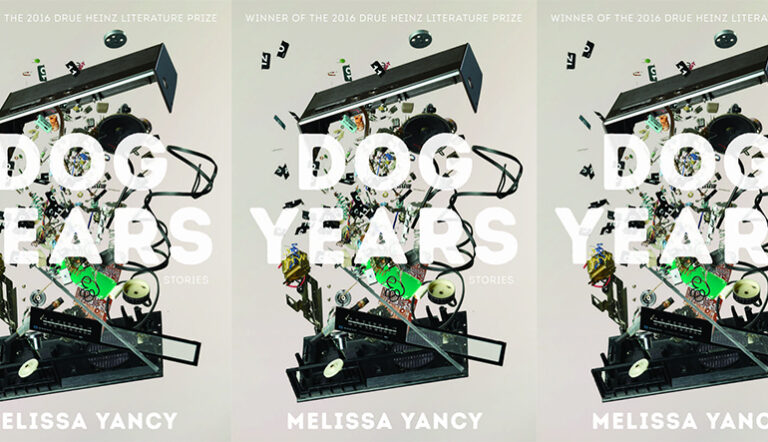The Caretaker by Doon Arbus
The Caretaker
Doon Arbus
New Directions | September 15, 2020
Doon Arbus understands what it means to defend a legacy. Her mother was the famous photographer Diane Arbus, known for her curious, unblinking, sometimes astonishingly intimate portraits of marginalized subjects. When Diane died by suicide in 1971, she bequeathed her estate to Doon, who proved to be a fiercely protective trustee. For years she refused to allow critics to examine her mother’s letters, journals, or diaries and was famously loathe to grant reproduction rights to her mother’s photographs. Although Doon Arbus was a highly successful journalist in the 1960s (she was a pioneer of New Journalism alongside writers like Tom Wolfe and Joan Didion), much of her writing since her mother’s death has wrestled in some way with the legacy her mother left behind.
Now, at age 75, Arbus has published her first novel, The Caretaker. This shrewd, enigmatic debut is set in an unassuming three-story brick structure in midtown Manhattan, the fictional Morgan Foundation. Amid a forest of gleaming new skyscrapers, the Foundation perseveres, a rumpled survivor from the pre-war era. Tending to the Foundation is the book’s unnamed protagonist, a gentleman referred to only as “the caretaker.” Self-effacing to the point of erasure, this shabbily dressed, “monochromatic man” has spent the last twenty-five years of his life inside the Foundation’s walls, giving elaborately choreographed guided tours by day and, by night, retiring to a drab, sparsely appointed servant’s quarters upstairs.
The caretaker reveres the Foundation’s eponymous founder, Dr. Charles Morgan, now deceased, an eccentric millionaire who wrote a landmark treatise called Stuff. This philosophical masterwork describes the pleasures of collecting and owning inanimate objects, and the Foundation is its real-life instantiation, the final repository of Dr. Morgan’s vast collection, like a cross between Sir John Soane’s Museum in London and the Museum of Jurassic Technology in Los Angeles. Its curatorial mode is that of a rebus: a puzzle in which objects high and low, priceless and seemingly valueless, are arranged in elaborate displays that mutely challenge visitors to make meaning from the chaos. A priceless meteorite might be juxtaposed beside a specimen of old driftwood. Rare, fascinating daguerreotypes are displayed beside seemingly random collections of “writing implements, pinioned horseflies, doorknockers, [and] wishbones.”
Put another way, the Foundation seems like a lovely place to while away a rainy afternoon. As the novel starts, however, inside forces begin to threaten the Foundation’s legacy. The board of directors, hoping to monetize the moribund facility, have introduced plans to encase the structure in glass and surmount it with a gigantic corporate skyscraper. Worse, they’re considering selling off the collection’s most valuable assets. For the caretaker, this represents a desecration of his life’s work, and the novel’s brisk 170 pages are dedicated to his audacious plan to strike back and preserve Dr. Morgan’s legacy—in particular, the scheme he puts into action on his dramatic, final guided tour.
Considering that The Caretaker’s central conflict is the protagonist’s quixotic mission to preserve an idiosyncratic interpretation of a dead man’s legacy, the temptation to psychoanalyze might seem irresistible. The book’s promotional material even comes with an explicit warning against a biographical reading: “The Caretaker might relate to the author’s personal experience, but the protagonist of this novel is a singular man and his story is his own.” Such an admonition, however, is unnecessary. The biographical parallels between the caretaker, Doon, and her mother are the least interesting aspect of Arbus’s novel. What makes The Caretaker so immensely pleasurable to read is the artistic talent Arbus shares with her mother. They both possess an unusual species of attention, a manner of looking marked by a bemused, impartial curiosity. They insist on letting subjects—and objects—speak for themselves.
In The Caretaker, this is most prominent in the characterization of the objects in Dr. Morgan’s collection. Everything is chronicled with such minute precision that they begin to feel alive. The Foundation building, for example, is lovingly anthropomorphized, described in the novel’s introduction as projecting a look of “baffled stoicism . . . squatt[ing] there stubbornly on its bit of turf, a dwarfed, defiant anachronism.” Precisely rendered lists and catalogs proliferate in the book, such as the following inventory of the contents of Dr. Morgan’s bathroom (preserved exactly as it appeared on the day of his death):
Various implements of personal grooming keep the drugs company on the counter: an unsanitized toothbrush and crimped toothpaste tube resting in a tumbler, an ancient safety razor, sharpened blade intact . . . along with an assortment of jars containing creams or gels, a shaving brush, a loofah sponge, and a tortoiseshell handled hairbrush with three wavy silver hairs entwined in its genuine boar and nylon bristles.
The scrupulous, almost photographic exactitude of these lists, together with their meticulous attention to detail (“genuine boar and nylon bristles”), sacralizes the objects in question, giving them their own kind of perilous agency.
In someone else’s hands, such an approach might come across as ponderous, but Arbus’s writing is uniformly tight and focused, rendered with a light, amusing touch. The Jamesian quality of her prose extends to the book’s pleasantly gothic atmosphere, reminiscent of The Turn of the Screw. Architecture is a character. Windows are often rain-splattered. The weather is perpetually gray. At one point, a cloudy sky is lovingly described as “an impenetrable uninflected pale grey mass that has consumed the sun.” The experience of reading The Caretaker feels like a visit to the Morgan Foundation might feel, or like flipping through a book of Edward Gorey drawings on a dreary afternoon. One basks pleasantly in the melancholy.
Nevertheless, there’s a sense of emergency to the caretaker’s project, and in the book’s denouement we discover what plans he has been harboring for Dr. Morgan’s “meticulously orchestrated ongoing conversation among objects.” This is, perhaps, where the temptation to draw parallels with Doon Arbus’s biographical situation becomes the most pressing, and one can’t help but question if the caretaker’s final act of protest is a way of venerating the objects he’s been charged with preserving or a means of consigning them forever to oblivion. But like everything else in Arbus’s compelling debut—and let’s hope there are more novels to come—it’s a question of how you look at stuff. The Caretaker is an enigmatic and necessary book, especially for those conflicted about the physical detritus accumulated over the course of a life.


